How to build your own PC [Part 1 - Components]
I notice many gamers are usually interested in switching from their console to a PC but have a hard time finding what they really want. Stores giving them overpriced ready built options, many don't realise how much cheaper it is to build PC's than to buy them store-ready.
This guide is to help people build their own PC and what they need to know when doing so.
Starting off with the basics, this part will show you all components needed for your PC.
Central Processing Unit (CPU)

The brain of the machine has to be carefully chosen according to what applications are intended to work with the machine. Central Processing Units (CPUs) are offered by 2 major companies, AMD and Intel. The choice of one or the other will be largely based on reviews and benchmarks that will help you determine what should go into your computer. Going one way or the other will affect your motherboard choice.
Number of cores
How many cores is best for you depends on your usage of your PC. As a general rule of thumb, the more cores are available on a chip, the better it will perform on CPU intensive applications, if they are appropriately optimized. Intel currently adds Hyper-threading to its i3 and i7 CPU ranges, which allows a core to have two separate threads for one core, so when an application on one thread stalls or needs to get info from the RAM, the other thread can start instead of the core staying idle until the original thread is ready again. Whereas AMD has a module system in which 2 cores share the same resources (such as an L3 cache). Benchmarks for specific CPU heavy programs will help you make your choice.
Clock speed
This is, strictly speaking, the number of clock cycles that occur in one second, or, more colloquially, the "speed" (measured in GHz) at which a CPU is running. Comparisons between architectures are not valid with this parameter however, since different architectures will allow more or less instructions to be processed during a single clock cycle. This means you will have to make your choice once you have decided what series of chips you are going for. It is possible to artificially raise the clock speed after having installed the processor if the motherboard chosen allows it, at the expense of a heightened heat output. This is called overclocking, and is generally not recommended with the cooler that comes with the processor. Aftermarket CPU coolers of various size, shape and cooling performance exist, both in air cooling (a heatsink and a fan) and watercooling (a closed watercooled loop with a radiator).
Socket
This is what determines the range of motherboards you will be looking at. The socket is the physical interface between the motherboard and the processor, and it differs depending on the processor series chosen. For example, current processors series from AMD use AM3+ (FX), FM2 (APU and entry level), FM2+ (APU and entry level), and AM1 (low budget/power), and Intel's series use LGA 1150 (Celeron through i7 and Xeon), LGA 2011 (high performance Sandy Bridge-E and Ivy Bridge-E), and LGA 2011-v3 (high performance Haswell-E). If you want to overclock and you need a CPU cooler, the only compatibility issue aside from physical space inside the case is matching sockets (for example, an OEM LGA 1155, LGA 1156, LGA 775 cooler will not match an AM3+ processor).
Motherboard (MOBO)
This is the skeleton of the system, the piece of hardware that will make everything work together. The motherboard is a crucial part in that it will set in stone your possibilities of future expandability (for example, more hard drives or a sound card) and what inputs you can use. Just because it has "gaming" in the name does not make it any faster, nor will it improve your gaming experience.
Form factor
Several form factors are industry standards governing the size and layout of the motherboard, in order to be able to fit any motherboard into any case provided their form factors match. The most common standard is ATX, followed by the smaller Micro-ATX and the even tinier Mini-ITX. Mini-ITX boards fit in MicroATX cases and ATX cases, and MicroATX boards fit in ATX cases. It does not work the other way around. Other, more obscure standards exist such as BTX, found almost entirely in OEM systems like Dell.
Socket
As discussed above, you will need your processor's connections to physically match those on the motherboard. This is simply done by having a motherboard of matching socket type. Note that AMD's AM3 processors will be supported on AM3+ motherboards.
Chipset
This is a chip on the motherboard itself that controls the data flows to and from other components. AMD socket motherboards will have AMD chipsets, and Intel socket motherboards will have Intel chipsets. They differ in terms of the features that they offer to the user. For example, H170 will not allow overclocking, and Z170 will allow it and bring the option of Intel's Smart Response Technology, which allows you to use a Solid State Drive (SSD) to enhance your hard drive's performance. Dual channel memory (which enhances your RAM performance and system memory bandwidth) is the standard for most chipsets, but some are limited to single channel (AM1), while others allow triple channel (X58) or even quad channel memory (X79 and X99).
PCI Express slots
These are the slots the video cards plug into. These have varying bandwidth options that we will describe as lanes, commonly described as 1x/2x/4x/8x/16x lanes. Typically a 16x slot is used for a graphics card. When considering a motherboard that may be used to Crossfire/SLI, attention should be paid to the lanes used once Crossfire/SLI is activated. Most mid-level motherboards will support both cards in 8x, which does not impact significantly on the performance, but some mid-level and most low-end motherboards will not support higher than 4x in the second slot, which may throttle the performance. High end processors and chipsets like the X79 and X99 can support as many as 40 PCIe lanes for improved bandwidth with multi-GPU builds. There are also multiple revisions of PCI express lanes, PCIe 1.0 through PCIe 3.0. The newer the PCIe revision the higher bandwidth it delivers per lane, PCIe 1.0 offers 4GB/sec at 16x, while PCIe 2.0 offers the same bandwidth at 8x, and PCIe 3.0 offers it at 4x.
Internal ports
This is where you will have to carefully choose motherboards in function of the components you plan to put in the system. Hard drive data ports, referred to as SATA ports (more on these in the SSD section) are limited in number, as are video card slots and USB internal headers. In general, any motherboard will have a sufficient number of ports for your first build unless you have a crazy requirement.
External ports
This is what is referred to as the rear I/O ports. You'll just need to remain aware of how many peripherals you need to connect to your PC, and choose accordingly.
Memory (RAM)
RAM (Random Access Memory) is the system's way of storing data about to be processed, or frequently used by applications, on a medium that allows for very fast transfer rates. A real-world comparison would be pulling a folder (RAM) out of a file cabinet (the hard drive) in order to study it (process it) faster. Minimal benefit is obtained from having excess RAM, but not having enough forces your system to either close programs or swap the memory to your HDD's swap area (called pagefile on Windows), which can make systems extremely slow.
Standard
The current memory standard is DDR3 DIMM 240 pins and DDR4 DIMM 288-pin for high end builds. The "DIMM" part just indicates that its format is desktop memory. This is important because a laptop format called SO-DIMM also exists and would not function with a full-sized DIMM motherboard (some Mini-ITX motherboards do use SO-DIMM RAM though, so it's not totally exclusive to laptops, but these are mostly limited to mini-PCs (Like the Gigabyte Brix)).
Frequency (in MHz)
Often incorrectly referred to as the RAM's "speed", this describes how many clock cycles are in a second. Frequency is also know as "clockspeed" since it describes how quick the clock cycles follow each other. The "regular" DDR3 frequency is 1333MHz, but given the very low price increase between 1333MHz and 1600MHz memory, most people go for 1600MHz. Unless the system is being designed for a very specific memory-intensive purpose, as a general rule it is not cost-effective to go beyond this speed. DDR4 frequencies are typically 1866MHz or 2400Mhz, but can be even higher.
Latency or Timings
This indicates how fast (in number of clockcycles) the memory reacts to a request to read data or to write data. The most important of the four numbers displayed is the first one, called CAS latency. For example, a module with timings 9-9-9-24 (the "regular" timings) is a CAS9 module, sometimes also referred to as a CL9 module. More information on timings and clockspeed is available here.
Number of modules
As a general rule, one should always try to benefit of the channel mode available (Dual, Triple and even Quad Channel exist). In a nutshell, Dual Channel means that each module of your pair benefits from a separate pipeline to the CPU, whereas a single module of greater capacity would have used only its own pipeline. Consequently, a pair of modules has a better throughput than a single module by virtue of having more bandwidth available.
Capacity
In common usage, it is difficult to break past 8GB of memory usage, even with multiple instances of programs running. Systems benefiting from more than 8GB are generally geared towards CPU-heavy applications like video encoding and 3D rendering.
UniDIMM
With the release of Intel's Skylake CPU architecture, a new RAM format was introduced by Intel. With Skylake supporting both DDR3 and DDR4, the UniDIMM was announced. It is a 260 pin SO-DIMM in either DDR3 or DDR4 NAND flash. Note that this is a very uncommon format.
Hard Disk Drive (HDD)
The Hard Disk Drive is the mass storage solution. This is a high capacity drive that stores data magnetically on circular platters (hence the "hard disk"), to the tune of up to 8TB
Speed
The rotational speed of HDDs is the aspect that will tell you for the most part how fast the component will be. As a general rule, a 7200 RPM hard drive should be preferred to a lower speed drive of identical size, which will be noticeably slower booting up and accessing files.
Capacity
HDD capacity goes up extremely quickly with relatively little investment. A 500GB HDD is currently not priced much lower 1TB drive, with games and other applications increasing in size rapidly, allowing room to beyond your current needs can be helpful.
Physical Size
There are 2 sizes for hard drives: 2.5" and 3.5". The bigger size is considered the desktop size, and is generally a little faster than a 2.5" drive of equal speed ("laptop size").
Solid State Drive (SSD)
This is a drive with traditionally limited storage, due to the very high cost per GB, but extremely fast read/write speeds. This is an ideal drive to store your operating system and a couple of games with long and/or frequent loading times, as well as your main applications.
Controller
The limited number of operations that can be performed on the drive means that the way data is written on the drive has to be highly efficient. The controller is the chip that governs this, and different drives have different controllers. Some controllers may have outstanding issues that necessitates a firmware patch, or even as of yet unresolved issues, so checking reviews is important when choosing this.
SATA Revision
The fact that SSDs are very fast drives means that input/output standards are actually a concern. The "regular" data transmission standard is SATAII (also called SATA 3.0Gb/s), and its bandwidth is sufficient for the slower SSDs. Better, faster SSDs will use SATAIII (also known as SATA 6.0Gb/s). This is a relatively good indication of speed, although you'll need to look up benchmarks to make an informed choice.
Capacity
This is a big part of the choice for an SSD. A typical Windows 7/8.1 installation takes up roughly 20 GB, 120GB is generally the entry level size with some room for games and applications. 240GB+ has become available for builders at a lower cost than a 120GB drive was a year ago.
Video card (GPU)
Most processors (with the exception of FX, I7 extreme edition, Xeon, and Opteron) include GPUs on the chip, called integrated graphics. If you're not gaming, these are more than adequate, and the newest broadwell/skylake/APUs can even handle entry level gaming. The video card is the component driving your display. In gaming systems, the choice of this component will determine for the greatest part the in-game performances obtained. In video- or 3D-editing application (via hardware acceleration), the correct choice for the software used will improve encoding and rendering times.
Graphical Chip
When talking about graphics cards, the most defining aspect is the GPU (graphical processing unit) itself. GPU's typically come in 2 companies, AMD and nVidia, and have naming schemes that reflect their performance relative from each other within a series. For example, in the R9 series of AMD GPU's, the 390 is less powerful than a 390X but more than a 380X. This is true for the R7 series below as well. Similarly, in the 900 nVidia series, the 970 will have lower performance than a 980, but better than a 960. AMD commonly uses the X suffix to denote a middle ground between a lower GPU and a higher one.
Memory
The graphics cards memory is where it stores the data processed and about to be processed. Graphics cards are available for consumer and professional needs. GDDR5 in various configurations is the standard memory, DDR3 is available on low end cards for low power needs. Amounts range from than 1GB to 8GB for a single GPU, with higher amounts offered on multi-GPU and professional cards. Memory size and bandwidth needs are dependent on the applications of choice and the GPU being used, as well as system hardware and display configurations.
Cooling Solution
The video card is generally the most heat- and noise-producing component inside a computer case. Therefore, choosing a video card of a certain brand over another brand should in part reflect cooling concerns. What are called reference cards (cards produced directly by nVidia or AMD) have a weak but adequate cooling solution with a single, low efficiency fan intaking air and making it circulate through the whole card before exhausting out of the back of the case. This is not ideal, in particular when SLI or Crossfire are considered. Most manufacturers offer non-reference cards that have up to 3 standard 80mm-110mm fans, but at the expense of heatsink size, and some even offer a triple-slot card with a full-size radiator and full-size fans.
Power Supply Unit (PSU)
The PSU is the component responsible for transforming the wall socket's 100V-240V current into clean DC current in the forms of 12V, 5V and 3.3V rails, and supplying it to your components. Power supplies are one of the lesser understood (and harder to understand) parts of a PC, luckily there are multiple journalists and websites which review them.
Form factor and connectors
Unless the system considered is a HTPC with specific form factor PSU due to the very small case factor (generally included with the case), a standard ATX/Micro-ATX case will accept an ATX power supply. For any recent systems, required power connectors are the 20+4 pin connector and at least a 4 pin CPU connector. You will then need to determine what connectors your video card and your other components need (SATA power or Molex power) and check with the PSU specs to see whether or not it comes with sufficient numbers of connectors.
Cables
The number and configuration of power cables is important since different systems may require different cables. The main cable is referred to as the 24 pin cable, plugs into the motherboard and is often composed of a 20 pin connector alongside of a 4 pin connector, for backwards compatibility reasons. In most systems today, an auxiliary power cable is needed for the CPU, usually plugged into the top left of the motherboard. Power cables to peripherals come in two sorts, the declining 4 pin Molex format or the SATA power connector, similarly L-shaped as the data connector. Video cards are given power by either 6 pin cables or 8 pin cables, a 6+2 pin cable being able to fill both roles.
Modularity
The PSU is the component that will generate the most cable clutter. To the end of avoiding the clutter, thus helping the air flow, one may choose a modular PSU, where the cables not needed can be disconnected from the PSU. Semi-modular units will generally leave attached the 24 pin connector, EPS12V connector, video card as well as a SATA power and Molex power connectors, while leaving you free to disconnect the rest.
Wattage Rating
The power consumption of a system is measured in Watts (W). For a given system, the power supply unit must be chosen adequately in order to be able to handle the system's power draw. In general, currently single video card systems require no more than 550W and dual video card systems may require up to 850W. Allowances must also be made for a great number of drives lacking staggered spinup, or the presence of additional non-trivial hardware. Some power supplies may be labeled as a higher wattage than they can safely provide so be sure to check review sites.
Efficiency Rating
Most quality units have an efficiency rating which measures the offset between load drawn by the components from the PSU and load drawn by the PSU from the wall. The 80+ rating signifies that at 20%, 50%, and 100% of the rated load, the unit is efficient at 80% or more in transforming the power. Additional ratings Bronze, Silver, Gold, Platinum and Titanium give a more precise indication, at respectively 82%, 85%, 87% and 90% efficiency. In general the rating helps in choosing a good PSU, but there is again no substitute for reviews.
Amperage, Voltage
Power supplies deliver three different voltages, 12V, 5V and 3.3V. The by far most important (power hungry) one for the CPU and GPUs is the 12V one. Power in watts equals voltage [U] times current [I], and on the specification of the PSU you can either see how much power or amperage it can deliver at 12V. Here, you just need to watch out how much of its rated wattage actually goes into the 12V rail, since this is the one important for your CPU/GPU(s). For example, a 600W unit can theoretically only deliver 500W at 12V and the rest at the other voltages, even though this is very uncommon, it's only seen in some prebuilt PCs, so watch out if you want to upgrade the GPU of such a PC.
Case
The case protects your components from exposure to the outside world - dust, curious cats and trailing limbs are enemies of your system. There is an extremely wide variety of cases available from a great number of brands, and it can be complicated to know the good features from the useless gimmicks. Asking for recommendations for a specific system and specific requirements is a good idea if overwhelmed by choice.
Form factor
Your case imperatively has to accept your chosen motherboard's form factor. This is the only requirement that will tell you whether or not the motherboard physically fits inside the case. Additionally, you will have to check your case's dimensions for vertical clearance if you buy an aftermarket CPU cooler.
Airflow
When looking at a case, consider carefully the number of fan placements available and the number of fans included with the case. Two interesting features to look out for are side panel fans pulling air onto the GPU and removable dust filters.
Cable Management
These holes all along the motherboard will drastically cut down the clutter of cables that a non-modular or even a modular PSU will generate, thus reducing obstacles to airflow inside the case. Some cases, mostly higher-end, offer rubber grommets around these spaces for aesthetics. The most important cable routing hole is located on the top left of the motherboard tray and is made for the CPU power cable located in the same spot on the motherboard, as it would need to go directly over the motherboard otherwise.
Window
A windowed side panel generally adds to the expense of the case, but also makes it noisier. Some cases have a side vent instead that can improve GPU airflow.
Plastic or Metal
Less expensive cases may be made primarily of plastic. More expensive cases may be partly or entirely metal. Metal transmits noise a bit more, and some of the quietest cases have dampening material on the inside of the side panels.
Toollessness
The trend on modern cases is for less need for screwdrivers and less loose screws. Many cases have side panels where the screws are attached to the panel and cannot be lost. Less expensive cases will have PCI-E slot covers that can be popped out, while others will have the covers removable.
Bays and Mount Points
Most cases have a fixed number 2.5", 3.5", and 5.25" bays. The 2.5" form factor includes SSDs and laptop hard drives; many times these are just screw-on spots inside the case as the most common use is for SSDs which are unaffected by vibration. The 3.5" form factor is primarily for desktop hard disk drives; higher quality cases have cages with some vibration mitigation that allows more drives to be placed together without shortening their lifespan as much. The 5.25" bays connect to the front of the case and may hold just about anything, from an optical drive to a fan controller; some newer cases eschew these entirely.
Monitor
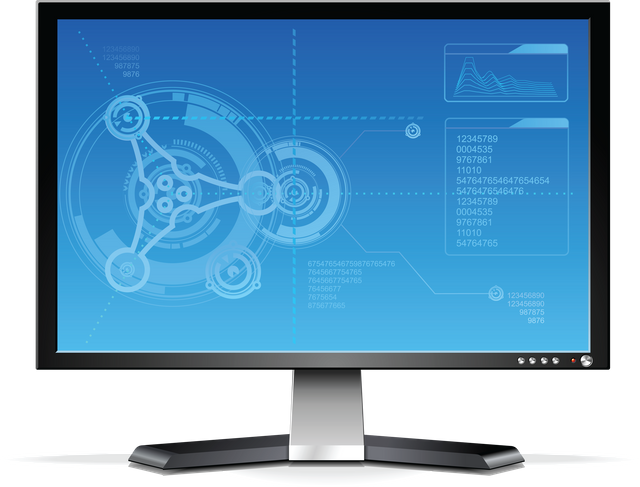
Monitors are sometimes overlooked or an afterthought, but they are extremely important. Monitors are the component you will looking at whenever you use your PC, and a quality monitor can make a huge difference in the overall experience! There are many specifications and options that can be confusing, especially since your choice of monitor can affect how powerful the rest of the PC needs to be to keep up. Monitors plug into video outputs on the motherboard or into the GPU if the PC has one. Multiple monitors can be used on a single PC as long as the motherboard or GPU has enough video outputs.
Resolution
The most common resolutions used in monitors today are 1920 x 1080, 2560 x 1440 and 3840 X 2160. These are almost always referred to as 1080p, 1440p (2K) and 4K respectively. The monitor resolution is the same as how the term is used in photography - the number and density of pixels that are on the monitor. The higher the resolution, the sharper the image will look. This image improvement comes at a steep performance cost however - a 1440p monitor will require a significantly more powerful GPU to achieve the same frame rates as a 1080p monitor and this is even more true for a 4k monitor, which requires an extremely powerful system. At this time 1080p is the most common resolution used, though 1440p is sure to overtake it in time.
Refresh Rate (Hz)
As a monitor is used for any reason, it is constantly updating the screen with new static images exactly like a movie. The number of times the monitor refreshes each second is called the refresh rate, and the specification uses the unit hertz (Hz). A simple way to consider the refresh rate is as the maximum number of images (or frames) per second (fps) the monitor is capable of displaying. The most common monitors are 60 Hz, they can display a maximum of 60 fps as long as the rest of the PC hardware is capable of producing that many frames. There are also 144 Hz monitors which can display a maximum of 144 fps. These monitors are particularly prized by people who play competitive video games such as Counter Strike or MOBA's and also by professionals that regularly use rendering or image manipulation software. Note that many games (especially multi-platform releases or console ports) gain no benefit from 144 Hz monitors because their maximum frame rates are often capped (usually at 60).
Response Time (ms)
A commonly advertised number, the response time is the time (in milliseconds) it takes for pixels of the monitor to change color. Lower response time means less motion blur in movement; however, unless the response time is close to the refresh time (60 hz = 17 ms refresh time), modern LCD screens do not have an issue with blur.
Display Lag (ms)
The display lag or input latency is the amount of time it takes for an input to be shown on the screen. This time is also measured in milliseconds. Lower display lags are better for all applications, but especially for any application that requires fast and precise response. Televisions usually have a much higher display lag than computer monitors, which can make them non-ideal for certain game types. Unfortunately this measurement is not part of any marketing for monitors, and can only be found inconsistently through third-party reviews.
Panel Type
Nearly all computer monitors are LED-backlit liquid crystal displays, but there are different LCD panel types. The most common are TN and IPS. TN panels typically have lower response time and display lag and are less expensive. IPS panels typically have more accurate colors, with a wider viewing angle that does not distort color. Other panel technologies include VA and PLS, which may fall somewhere in between. However it's important to note that the viewing angle, color quality, and speed of each monitor varies and cannot be summed up simply by naming its panel type.
Internal Peripherals and Cables
There is a lot more to PC building than just picking out the components above. Many specialized components are available to fit your needs, be it having more front panel or back panel USB, setting up a complex storage system like RAID6 or controlling your fans' rotation speed. This section will also cover internal cables and standards.
Sound cards
There is a misconception that sound cards fulfill a key role in getting a decent sound out of your system. In reality, the sound chip integrated in the motherboard is good enough for most people. A discrete sound card or - probably better - an external DAC only becomes a necessity for those with higher quality or audiophile headphones, headsets, or speakers who have an absolute requirement for high quality audio. It also becomes a necessity with high impedance, audiophile grade headphones which need an amplifier and for those people who want EAX effects or better positional audio. For most people upgrading headphones/speakers will benefit more than a sound card would. /r/audiophile is a good resource for further reading.
Expansion peripherals
These can be used to add specific outputs like Firewire to the back of the case or to an unused 5.25" or 3.5" front panel bay. They usually plug into either an unused PCI or PCI Express slot, or directly in the relevant motherboard header.
Fan Controllers
These devices allow you to centralize all the fan connections in the case, and usually fit into one or more front 5.25" bay, and let you control the fan speeds with either dials or incremental buttons. Usually, they will require 3pin cord extensions to ensure all the fan cables reach to the front of the case. These may also, in some cases, display temperatures at various points in the system.
Data Cables
These are the cables responsible for transferring data from the hard drives and the optical drive to the motherboard. These are mainly SATA cables, flat and L-shaped. PATA, also know as IDE, is a defunct standard still supported by some motherboards and generally found in older hard drives and optical drives.
Congratulations @getssidetracked! You have received a personal award!
Click on the badge to view your own Board of Honor on SteemitBoard.
For more information about this award, click here
Congratulations @getssidetracked! You have received a personal award!
Click on the badge to view your Board of Honor.
Do not miss the last post from @steemitboard:
SteemitBoard World Cup Contest - Quarter Finals - Day 2
Participate in the SteemitBoard World Cup Contest!
Collect World Cup badges and win free SBD
Support the Gold Sponsors of the contest: @good-karma and @lukestokes
Congratulations @getssidetracked! You received a personal award!
You can view your badges on your Steem Board and compare to others on the Steem Ranking
Vote for @Steemitboard as a witness to get one more award and increased upvotes!